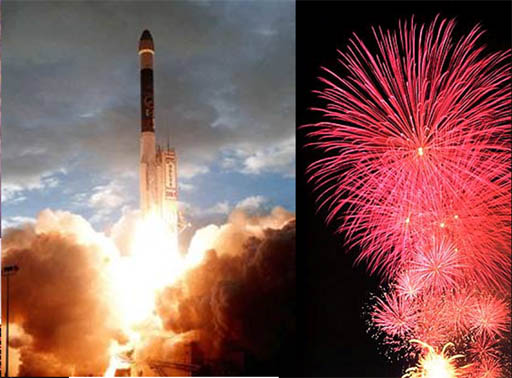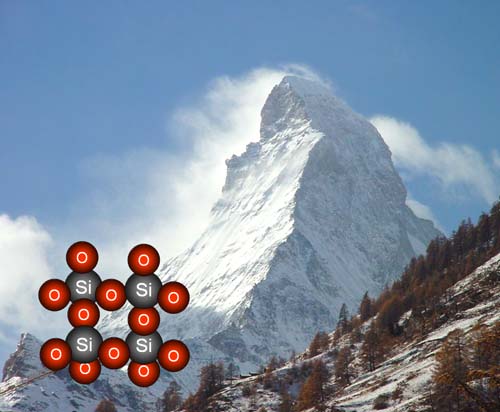Page 50: Objectives
1. Prepare oxygen by a decomposition reaction
2. Observe and record some chemical and physical properties of oxygen
3. Dissolve some oxides in water and check whether acids or bases are formed.
This lab is interesting because you are creating oxygen from a solid. The solid is KClO3 (potassium chlorate). As KClO3 is heated up it decomposes and O2 is one of the products.


Experiment 7: Page 52
A. Physical Properties of O2
1. Does oxygen appear to be soluble in water?
This question is similar to lab 5 question D. You can review the help page for that. Here you bubble oxygen into an inverted container. The oxygen will displace the water in the container. If oxygen was real soluble in water, it would simply dissolve in the water and not form a gas that pushes the water out.
2. What observation tells you about the solubility of oxygen in water?
The observation is that oxygen bubbles pass through the water and remains a gas.
3. Stand a small candle on a glass plate and light it. Carefully invert a bottle of oxygen over the candle and record the time that the candle burns in your oxygen. Repeat the experiment using a bottle of air. Record the time that the candle burns.
The father of modern chemistry, Antoine, Lavoisier, did a similar experiment in late 1700's. Instead of a candle, he used a bird and recorded the time the bird lived in a container of pure oxygen compared with just air. He also did an experiment with a guinea pig and realized that respiration of living things was like the combustion of a candle (both produced heat and consumed oxygen).
Reasoning scientifically, would you conclude that all of the oxygen molecules have reacted when the candle goes out? Give a reason for your answer.
A candle can be put out by blowing on the flame. Blowing on it actually brings more oxygen to the flame, yet it goes out. That's because we are cooling the wax which was vaporizing and burning. So a candle wick has to remain hot enough to sustain combustion. We could reason that if the oxygen levels drop low enough, the flame will diminish and there won't be enough heat to maintain combustion. So not all oxygen will be consumed when the flame goes out would be most likely.
3. Hold a 2-5cm strip of magnesium ribbon in crucible tongs and ignite it by heating with the burner flame (Do not look at the burning magnesium because the light is too intense).
Not only is the light too intense, it is also producing ultraviolet light which is damaging to the eyes.
C. Behavior of Oxides plus Water
1. When you burned sulfur, a gas, sulfur dioxide, SO2, was formed by a combination reaction.
Write the correct formulas under the names:
Names |
Sulfur |
+ |
oxygen |
-> |
sulfur dioxide |
S |
+ |
O2 |
-> |
SO2 |
Nonmetal oxides + Water --> Oxyacids (also called oxoacids)
The equation for sulfur dioxide and water is:
SO2 + H2O --> H2SO3 (which is sulfurous acid). So the water provides some hydrogen atoms that easily come off making the solution acidic.
This behavior is what gave oxygen its name. Lavoisier (mentioned above) discovered that non-metal compounds of oxygen such as nitrogen oxides, phosphorus oxides, and sulfur oxides would turn into acids when in mixed with water. For example, nitric acid, phosphoric acid, sulfurous acid, and sulfuric acid would get generated. "Oxy" meant acidic or sharp (like the sharp or sour taste of vinegar). Oxygen means a generator of acids. So that's how oxygen got its name.
Names |
Magnesium |
+ |
oxygen |
-> |
magnesium oxide |
Mg |
+ |
O2 |
-> |
MgO |
Complete the general equation:
Metal oxides + Water --> Metal hydroxides (also called alkaline hydroxides)
Here's the equation for MgO and water:
MgO + H2O --> Mg(OH)2
Some of the Mg(OH2) dissolves in water to make Mg2+ and 2OH-. It's the OH- that the litmus paper reacts to, turning it blue (alkaline).
Experiment 7: Page 55 (skipping questions 1, 2, 3)
4. Circle the compounds that are oxides:
C2H5OH The oxygen here is part of the OH group called a hydroxyl functional group. Alcohols have that group.
SiO2 Yes, this is silicon dioxide (silica mentioned above), so it is an oxide.
Li2CO3 Here you need to recognize that CO3 is the polyatomic ion known as carbonate. So oxygen is attached to the carbon and not the lithium. Li2O would be an oxide but Li2CO3 is a carbonate.
N2O5 If you name this you would say "dinitrogen pentoxide" so yes this is an example of a non-metal oxide which forms an oxyacid when reacting with water. It actually produces two nitric acid molecules.
N2O5 + H2O --> 2HNO3
KClO3 Here you need to recognize that ClO3 is a polyatomic ion. So the oxygen is grouped with the chlorine making its behavior that of a chlorate not an oxide. K2O would be an oxide but this is a chlorate.
HNO3 Here again you need to recognize O3 is not alone, it is grouped with nitrogen to make a nitrate (NO3).
H2O If you give water its strict chemistry name, you get dihydrogen monoxide. So this is an oxide. Using the name "dihydrogen monoxide" (also referred to as DHMO) was done to cover up the fact that one is referring to water. So it has been used as a prank on many people. Check out this website: http://www.dhmo.org/ and this article at Snopes: http://www.snopes.com/science/dhmo.asp
5. Is combustion a physical or chemical change? This should be easy because we all know that combustion is causing oxygen to combine with what is burning. So it is a chemical change.
Define combustion in terms of reactants and products.
Our first stab at the name might be "iron oxide". For metal oxides that only have one oxidation state that would be OK, but for metals like iron that have different oxidation states, that isn't enough. We have to indicate the charge (oxidation state) on the iron. In Fe2O3 we know that oxygen always has a 2- charge. Since we have O3, the oxygen atoms have a total of a negative six charge. Since we see two iron atoms, we know that each of them must have a plus three charge (Fe3+)in order to balance with the negative 6 charge of the oxygen atoms. So our name must indicate the plus 3 charge on the iron. We do it with Roman Numerals. So what is the correct name?.
Write a word equation and underneath, write the correct formulas for each term.
WORD EQUATION:
water
Iron + oxygen ---> ???
FORMULAS:
H2O
4Fe + 3O2 ---> 2???
The catalyst is written above the arrow.
7. Look at the periodic table to classify each element as a metal or non-metal, and predict if a base or an acid would be formed when its oxide reacts with water.
Name of element |
Metal or non-metal |
Oxide + water gives |
|
K |
potassium |
metal |
??? [K2O+H2O->2KOH] |
P |
phosphorus |
non-metal |
??? [PO3+H2O->HPO4] |
N |
nitrogen |
non-metal |
??? [2NO+H2O->2HNO3] |
Ca |
calcium |
metal |
??? [CaO+H2O->Ca(OH)2] |
You don't need to include the equations I wrote in brackets. I just put them there so you can see how the acid or base got formed.